

The Road to Copyright Clarity. Videos, Music & Pictures - Digital Student - Canvas - LibGuides at University of Hull. *A Copyright-Friendly Toolkit (Valenza) However fabulous Creative Commons and Public Domain content may be, sometimes you really need to use copyrighted material. Say you plan to comment on popular media or current events. For instance, you may be planning to critique the portrayal of Native Americans in commercial films. You are going to want to “quote” some commercial films like Pocahontas, Lone Ranger, and Dances with Wolves. Larry Lessig: How creativity is being strangled by the law. The Section 108 Dilemma Panel One. *CC: Choose a License. This work is licensed under the Creative Commons LICENSE_NAME License. To view a copy of this license, visit LICENSE_URL. We are currently testing a new version of the License Chooser.
Please consider using the Chooser beta, and leave us feedback on how we can improve. Creative Commons is a non-profit organization. We need your support to continue providing these tools. Lorem ipsum dolor sit amet... About earlier versions The most recent license version is 4.0, which can be used internationally. *ARL Fair Use Week Infographic. Codes of Best Practices - Center for Media and Social Impact. NYU Libraries: Applying Fair Use - Copyright. Why I want you to steal my ideas. Please don’t steal my car.
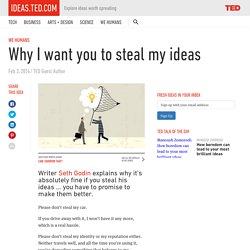
If you drive away with it, I won’t have it any more, which is a real hassle. Please don’t steal my identity or my reputation either. Neither travels well, and all the time you’re using it, you’re degrading something that belongs to me. But my ideas? About The Licenses. Our public copyright licenses incorporate a unique and innovative “three-layer” design.
Each license begins as a traditional legal tool, in the kind of language and text formats that most lawyers know and love. We call this the Legal Code layer of each license. But since most creators, educators, and scientists are not in fact lawyers, we also make the licenses available in a format that normal people can read — the Commons Deed (also known as the “human readable” version of the license). Document the Fair-Use Reasoning Process.
Teaching Tools Archives. Fair Use Evaluator. What this tool can do for you: What this tool cannot do for you:
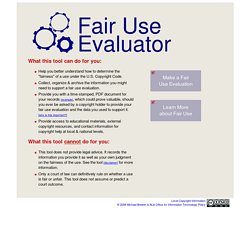
Intermediate Web Literacy I: Intro to CSS. Do the activity on your own to become familiar with fair use, open licensing, copyright, search, reverse-image search, and embedding images in a webpage.

Follow this link to the Thimble project for this activity. Click on the green "Remix" button in the upper right-hand corner of the window to go into the project's code. Click on the "Tutorial" pane next to the "Preview" pane in the upper right-hand corner of the coding window. Follow the steps in the tutorial to complete the activity. Even Weird Al Gets Permission – American University Intellectual Property Brief. If you’re on the Intellectual Property Brief website, odds are that you know what fair use is.
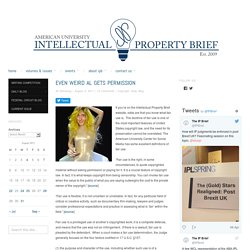
The doctrine of fair use is one of the most important features of United States copyright law, and the need for its preservation cannot be overstated. The American University Center for Social Media has some excellent definitions of fair use: “Fair use is the right, in some circumstances, to quote copyrighted material without asking permission or paying for it. It is a crucial feature of copyright law. In fact, it is what keeps copyright from being censorship. Fair use and transformativeness: It may shake your world. I am no longer sure that anything I learned, or anything I regularly share relating to fair use, is either helpful or relevant.
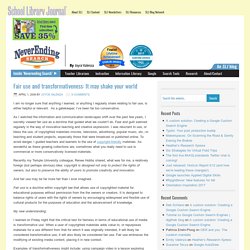
As a gatekeeper, I’ve been far too conservative. As I watched the information and communication landscapes shift over the past few years, I secretly viewed fair use as a doctrine that guided what we couldn’t do. Fear and guilt seemed regularly in the way of innovative teaching and creative expression. Fair use in a day in the life of a college student infographic feb2016.
The Information Literacy User’s Guide: An Open, Online Textbook. Now that you have gone through the processes involved to find and evaluate information, the next step is to start working with it.
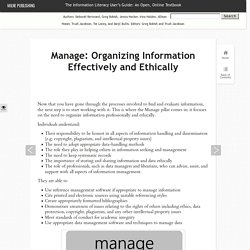
This is where the Manage pillar comes in: it focuses on the need to organize information professionally and ethically. Individuals understand: Their responsibility to be honest in all aspects of information handling and dissemination (e.g. copyright, plagiarism, and intellectual property issues)The need to adopt appropriate data-handling methodsThe role they play in helping others in information seeking and managementThe need to keep systematic recordsThe importance of storing and sharing information and data ethicallyThe role of professionals, such as data managers and librarians, who can advise, assist, and support with all aspects of information management.
They are able to Proficiencies in the Manage pillar It is wonderful to have access to information. But there is another type of information—not just the kind that provides directions. Remix Culture.